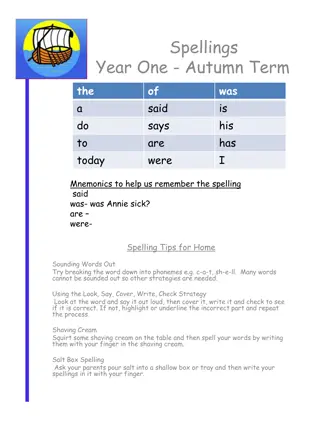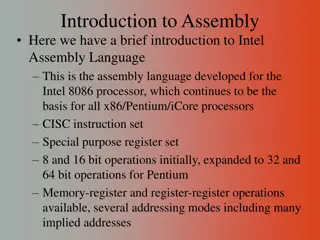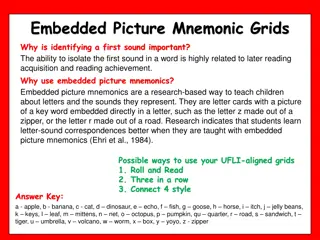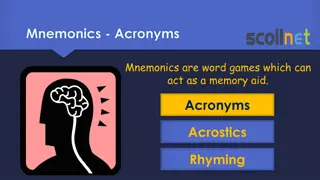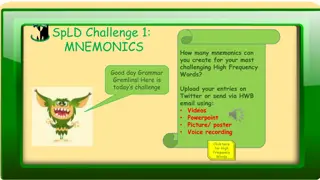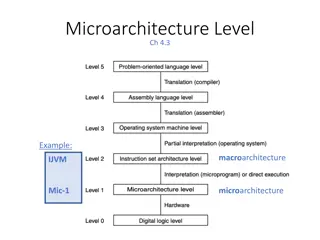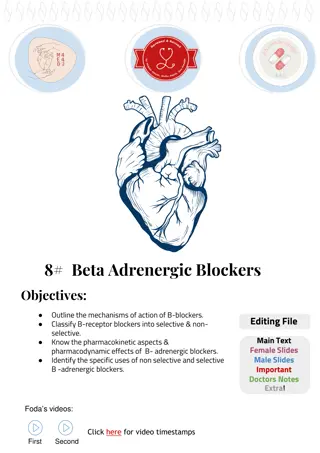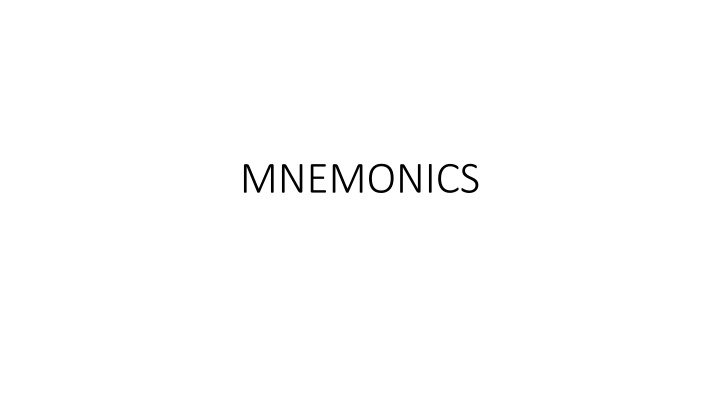
Enhance Memory with Mnemonics Techniques
Learn how mnemonic techniques can boost information retention and retrieval in human memory. Discover various types of mnemonics such as music mnemonics, name mnemonics, model mnemonics, and more. Explore how mnemonic systems improve memory and aid in memorization.
Download Presentation

Please find below an Image/Link to download the presentation.
The content on the website is provided AS IS for your information and personal use only. It may not be sold, licensed, or shared on other websites without obtaining consent from the author. If you encounter any issues during the download, it is possible that the publisher has removed the file from their server.
You are allowed to download the files provided on this website for personal or commercial use, subject to the condition that they are used lawfully. All files are the property of their respective owners.
The content on the website is provided AS IS for your information and personal use only. It may not be sold, licensed, or shared on other websites without obtaining consent from the author.
E N D
Presentation Transcript
Mnemonic is a learning technique that aids information retention or retrieval (remembering) in the human memory. It makes use of elaborative encoding, retrieval cues, and imagery as specific tools to encode any given information in a way that allows for efficient storage and retrieval. It aids original information in becoming associated with something more accessible or meaningful which, in turn, provides better retention of the information. In other words, mnemonic systems are techniques or strategies consciously used to improve memory. They help use information already stored in long-term memory to make memorization an easier task.
Types of mnemonics: 1. Music mnemonics - Songs and jingles can be used as a mnemonic. For example: how children remember the alphabet by singing the ABCs. 2. Name mnemonics (acronym) - The first letter of each word is combined into a new word. For example: VIBGYOR (or ROY G BIV) for the colors of the rainbow 3. Expression or word mnemonics - The first letter of each word is combined to form a phrase or sentence For example: "Richard of York gave battle in vain" for the colors of the rainbow.
4. Model mnemonics : A model is used to help recall information. Applications of this method involve the use of diagrams, cycles, graphs, and flowcharts to help understand or memorize an idea. For example: cell cycle, pie charts, pyramid model 5. Ode mnemonics : information is placed in the form of a poem 6. Note organization mnemonics : The method of note organization can be used as a memorization technique. Applications of this method involve the use of flash cards and lists. Flash cards are used by putting a question or word on one side of a paper and the answer or definition on the other side of the paper. Lists involve the organization of data from broad to detailed. For example : Earth Continent Country.
7. Image mnemonics: the information is constructed into a picture. For example: the German weak declension can be remembered as five '-e's', looking rather like the state of Oklahoma in America, in a sea of '-en's . 8. Connection mnemonics : new knowledge is connected to knowledge already known. 9. Spelling mnemonics : for example "i before e except after c or when sounding like a in neighbor and weigh". 10. Visualization mnemonics : it allows the user to create unique associations in an imagined space.


